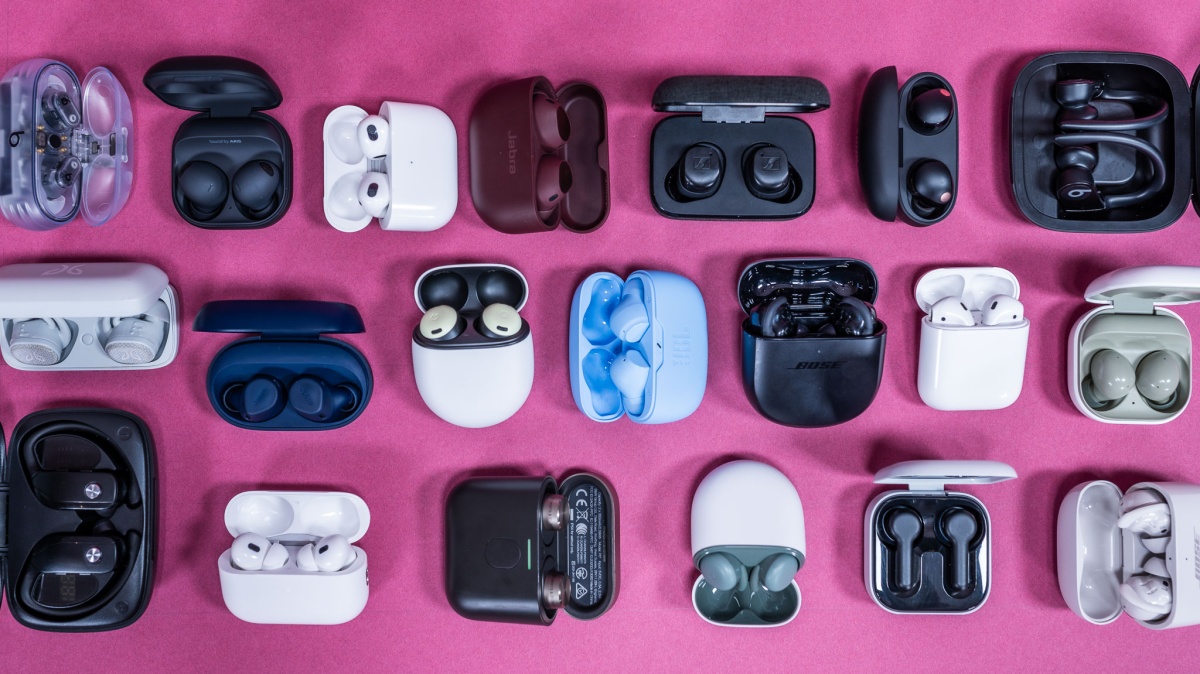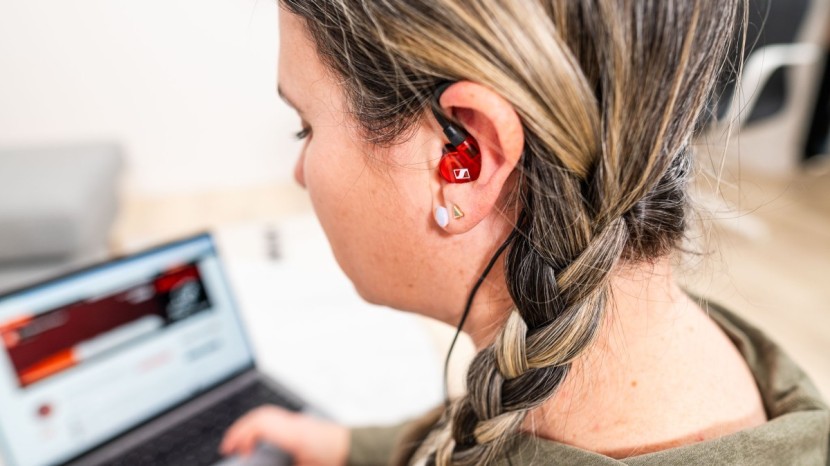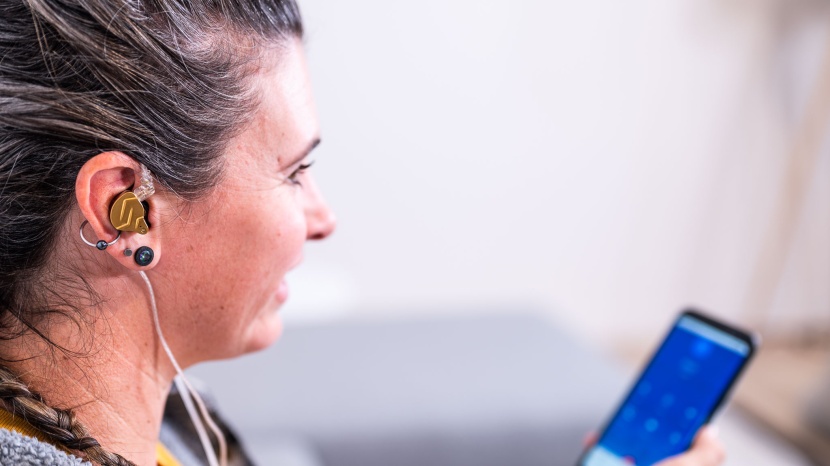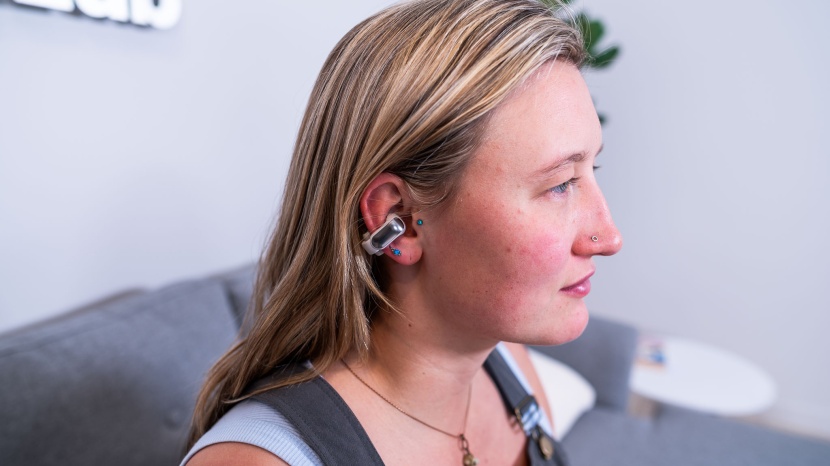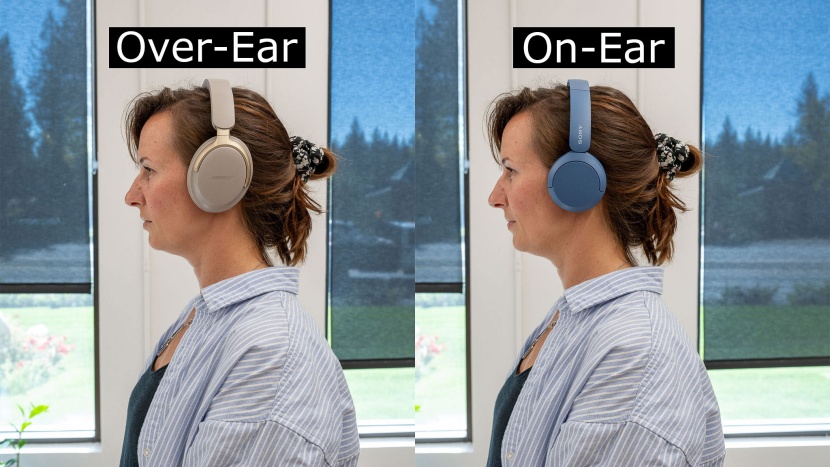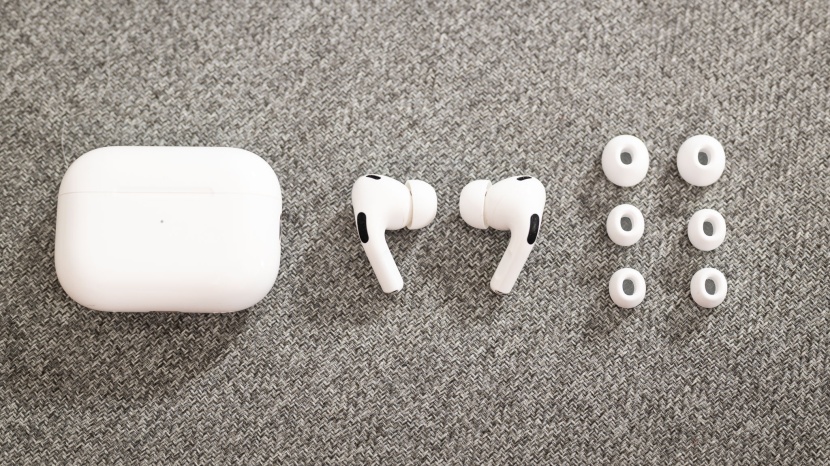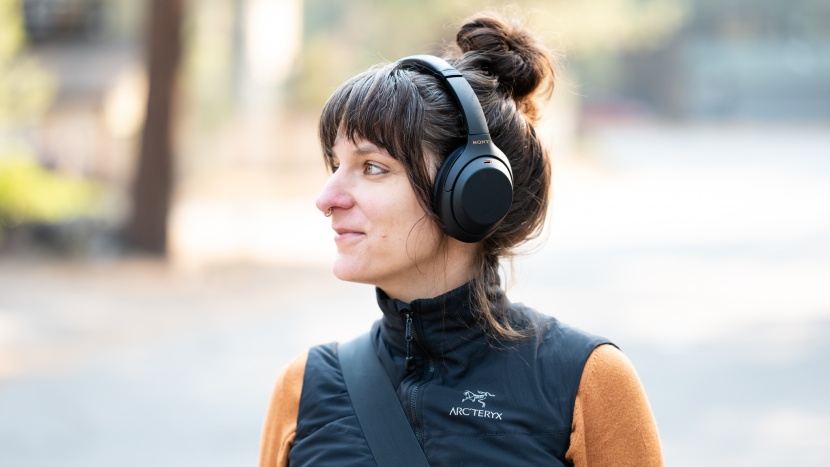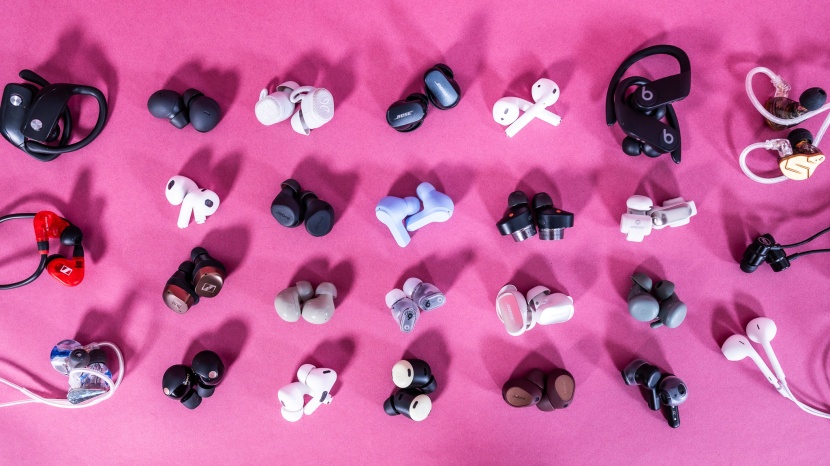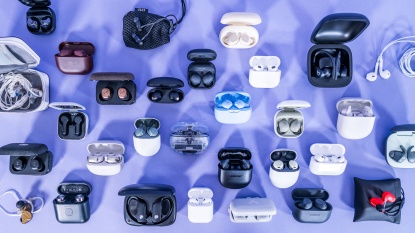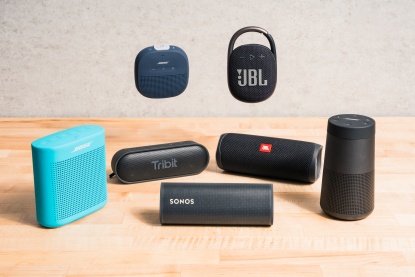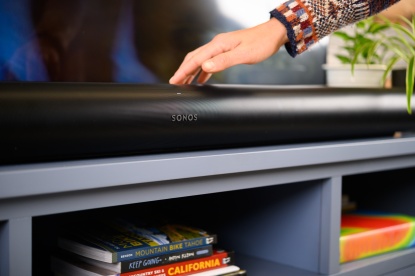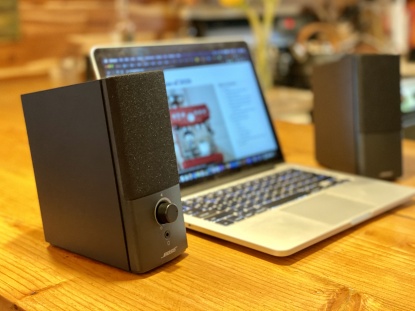How to Choose Earbuds and Headphones
We strive to create the world's most honest, thorough, and helpful product reviews. We take our work very seriously, assembling expert teams composed of sound specialists to construct and implement rigorous testing protocols. To that end, we recruited a panel of audio experts to listen to each earbud and headphone we tested using a carefully curated, genre-spanning playlist. Then, we ran each set through a barrage of objective tests before ranking their sound quality, as seen in the charts below.
Along the way, we analyzed the performance of each earbud and headphone in myriad situations and evaluated every function and feature to find the right earbuds and headphones for you.
We also built a state-of-the-art audio test studio, complete with a Brüel & Kjaer Type 5128 Head Simulator (B&K 5128 Hats) and SoundCheck software. Combining the real-world experience of our human testers with SoundCheck's objective analytics gives us the information we need to reach our ultimate goal — to help you find the best headphones and earbuds for your needs and budget.
If you're not sure what your needs are, you've come to the right place. We'll walk you through some of the most important questions to ask yourself before you decide which set is just right for you.
What's Your Budget?
Whenever you make a new purchase, you'll need to decide how much you can afford to spend and what features are most important to you. That said, we've tested a wide range of earbuds and headphones, and we have to say, you can get excellent sound quality at even the lowest price points. There are tradeoffs, though.
We'll walk through those tradeoffs below because you'll need to decide which features you want to prioritize after you nail down your price point.
What Are Your Priorities?
You can get excellent-sounding earbuds and headphones at wildly affordable prices, but they're likely to have wires. If you want wireless options, you may have to pay more than you'd like, even if they don't sound that great. Or, you may be able to find affordable wire-free options that sound great but only offer subpar noise cancellation, comfort, or features.
To prevent your head from spinning, consider writing down which features you need, which you merely want, and how much you can reasonably spend. Keeping those elements in mind will make the shopping process more manageable.
Your priorities could be any of the following:- Price
- Sound quality
- Comfort and fit
- Size and portability
- In-ear security and ruggedness for active use
- Battery life
- Active noise cancellation (ANC)
- Call quality
- Location tracking
If you're not sure yet, keep reading. We'll help you sort it out.
Where Will You Use Them?
One of the most important drivers of all of these decisions is where you plan to use your headphones or earbuds. Here's a quick rundown of possible answers and related concerns. This should get the wheels spinning.
In the Office: Offices are loud, and we often use the active noise cancelling (ANC) feature to help improve our focus. We want a comfortable option if we're wearing it for hours at a time, but they don't need to be that secure if you're just sitting at the desk all day. Though, if you often remove them for meetings or conversations, comfort might be less important to you.
While Traveling: We also love solid ANC on buses and planes. It can do wonders to reduce our anxiety in small, loud spaces. It's also important to consider comfort, portability, security, and solid battery life when you're on the go.
On Your Commute: In contrast to a plane ride, a commute might mean crossing busy streets, riding the subway, or biking near traffic. When you need to be alert, you want headphones that have a solid transparency mode, which will allow sounds to get past the physical barrier of the buds themselves.
Exercising: We prefer earbuds over headphones at the gym or on a run. They tend to feel more manageable, breathable, and secure. If you're going to work up a sweat, you need secure earbuds with a water resistance rating of at least IPX4.
Relaxing: If you're just there to focus on the music, movie, or podcast without involving your housemates, excellent sound quality is probably your top concern. Solid ANC and a comfortable fit will only help your relaxation levels.
House Projects: Wires may get in the way whether you're working on a DIY project or putting away the laundry. We also like ANC for chores like vacuuming and mowing the lawn, though housemates can scare the tar out of you when they come around the corner unexpectedly.
Sound Quality
These days, you can find mind-blowing sound quality in both earbuds and headphones. That said, it's easier to make a pair of headphones sound great. They're larger, and so are their sound drivers, which are the components that convert digital signals to physical sound. That means they can more easily build a big, expansive soundstage, a rich dynamic range, and offer more power across frequency ranges, especially the bass.
While compact earbuds can have outstanding clarity and precision, their small size makes it more challenging to produce a convincing bass line. However, they're getting better constantly, and several of our favorite models offer a balanced mix with robust, if not booming, bass. More commonly, they can articulate intricate nuance in the mid and treble ranges.
But there's an even bigger decision to make when it comes to sound quality — will you choose wired or wireless?
Are You Ready to Ditch the Wires?
While few of us want more wires and cords in our lives, wired earbuds and headphones offer significant advantages over their more convenient counterparts.
First off, you don't have to charge wired earbuds, ever. That means you never run out of juice in the middle of a six-hour flight and have to strategize how to handle yourself between recharges. That also means that they don't have an internal battery that will eventually die. Like, forever.
You can also blast your music without weighing how quickly you're willing to kill your battery. (Though we don't recommend that. Ears are important. Protect them.) Their audio quality is also more reliable and consistent since you don't have to worry about lag rates associated with Bluetooth communication. Wired earbuds are also far less expensive than their wireless counterparts.
That means wireless earbuds and headphones are more expensive, don't last as long, require frequent recharges and can suffer sound quality issues related to lagging data transfer rates. They sure are convenient though, and it's much easier to move through the world when you aren't physically tethered to your devices.
What's Your Sound Preference?
There is a lot of science and theory that goes into how companies mix the bass, mid, and treble frequencies in a pair of earbuds or headphones. Their unique profile can be charted in a frequency response curve, and we have an idea of what the ideal curve looks like for most models.
In the charts below, you can see our GearLab House Curve for earbuds and headphones compared to the frequency response of a few options we tested.
If you want more control over your listening experience, you'll want to choose models that offer manual EQ or equalization adjustments. That way, you can have some control over the sound profile.
Many of the earbuds and headphones we tested excel in one or two frequencies but aren't as strong in another. Here's a general guide to help you optimize them based on your favorite genres.
Bass Frequencies: Electronic dance music, hip hop, dub, and reggae often incorporate a strong bass line. If any of these genres are your jam, be sure to choose earbuds with power in those registers.
Middle Frequencies: If your favorite genres are rock, pop, R&B, soul, country, or folk, you'll want rich, warm, and clear mid-tones.
Treble Frequencies: Classical, jazz, metal, pop, and electronic music all rely on clear, brilliant high notes to reach emotive heights.
Audio Compression
There are sound profile preferences, and then there's just plain old sound quality. If you're using wired earbuds or headphones, the audio files are communicated along the wires, which is a relatively straightforward process compared to wireless transmission.
Bluetooth communication employs software programs, known as codecs, to compress, transmit, and then decompress data sent from one device to another, like between your phone and headphones. The process usually results in some level of reduction in sound quality, causing distortion or artifacts. That said, tech advancements are impressive. Codecs are better than ever and may be poised for a breakthrough.
There is an increasing array in today's wireless earbuds and headphones. You can think of each one as a unique language. Every earbud or headphone speaks its own codec fluently, like a native tongue. It also understands a variety of others, but, like a second language, the conversation won't be seamless. Here's a rundown of the codecs you're likely to run into:
SBC: The low-complexity subband codec is perhaps the most common. It's supported by most devices but delivers the lowest audio quality. You can think of it as the lowest common denominator.
AAC (advanced audio codec): A step up from SBC, it's often used in iOS systems.
aptX: Higher quality than SBC with less transfer lag, it's often used in Android devices.
aptX LL: aptX Low Latency reduces the delay between visuals and audio when you're watching a video.
aptX HD: A step up from aptX, the HD stands for high definition and is more effective when transferring high-resolution files.
aptX Adaptive: This codec adjusts audio quality between aptX and aptX HD depending on the quality file and the wireless connection.
LDAC: This codec has a variable bitrate that can offer better sound quality options like SBC and aptX if your phone is set up to take advantage of it. It's often used in Sony and some Android devices.
Samsung Scalable: Released with the Samsung Galaxy Buds, it works to smooth the auditory experience and the connection by constantly adjusting streaming rates.
LHDC: The Low-Latency and High-Definition Codec will transfer more data than SBC.
LLAC: The Low-Latency and Audio Codec has low latency transfer rates that are optimized for gamers.
Bluetooth LC3: A more recent addition that supports higher-quality audio than the SBC default.
Do You Need Top Notch Tech?
Technologies like active noise cancellation and spatial audio scapes that respond to your head movements are great, but do you need them?
Active Noise Cancellation
We love noise cancelling earpieces to help us focus at the office and calm down in chaotic airports and droning planes. So, for our testers, good ANC is a top priority. That said, if you only use your earbuds in places where you need to be aware of your surroundings, like on a run or during your daily commute, this may not be a necessary function for you.
In general, in-ear buds do the best job of passively isolating sounds, or physically blocking them, which helps quiet high-frequency sounds. Because of their larger size, over-the-ear headphones tend to excel at active noise cancellation. We find that ANC does far more to quiet the world than simple isolation, so headphones are the best option for anyone looking to maximize this feature.
Headphones and earbuds increasingly offer transparency features that automatically bypass noise cancellation so you can seamlessly carry on a conversation or hear important sounds in the background. It can be an important safety feature if you often use ANC in busy environments.
Call Quality
If you make a lot of phone calls, you'll need a pair of earbuds with good call quality. That means two things — 1. Your earbuds or headphones can replicate the cadence of your voice accurately, and 2. They block out background noise whether you're at the office, on the subway, or on top of a mountain. These are daunting tasks to nail perfectly, and you'll likely need to make a bigger investment in your headset if you want this feature.
Spatial Soundscapes
Several earbuds and headphones we've tested offer spatial audio settings to create a surround sound effect. Some will even track your head movements and shift the sound accordingly, making it seem like you're seeing a live band or living the storyline in your audiobook.
It's pretty fantastic when it works, which is rare so far. But the experience is so immersive that it's hard to do anything else but float in a sea of auditory bliss. If you don't have time to do that, these features may not matter to you.
Comfort and Fit
How comfortable a pair of earbuds or headphones feel is somewhat subjective, but our panel of testers tends to agree on the best models. Our benchmark test is to see if we can wear them for an hour or more at a time. If they don't pass that, we don't give them our top recommendations. The same is true if the earbuds or headphones feel unstable, slipping out of our ears or off our heads often.
Earbuds Versus Headphones
How comfortable you find earbuds versus headphones may be one of the biggest factors determining which one you choose. Some people don't like the bulk of headphones, and they can be hard to wear with glasses. Others dislike the crowded feeling of sealing your ears with an in-ear bud. We tend to prefer headphones for long hours at our desk or on a flight when their superior ANC is worth the extra volume, and we aren't moving around enough to knock them off our heads.
An important distinction to note about the comfort of headphones — over-the-ear headphones, which tend to rest around your ear rather than on it, are far more comfortable than on-ear-headphones, which press directly on your ear. On-ear headphones also leak more sound and don't do as much to block external noises. For these reasons, we almost always prefer over-ear models.
Earbuds are great when you're running, commuting, or need something small that fits your pocket. Many of our testers can also find comfortable models they don't mind wearing all day at the office. However, those are few and far between. So, if you're nervous about whether or not you'll like wearing them, pay close attention to our comfort rating metrics. If you have small ears, larger earbuds are rarely comfortable for any length of time.
Other Considerations
If you plan to wear them while working out or walking or biking around town, a secure fit should be one of your top priorities. For that reason, we recommend earbuds over headphones, which tend to slip off easily and don't fit under a helmet. If you do opt for earbuds, they should breathe fairly well, especially if you'll be working hard enough to sweat. If that's the case, you'll also want a water resistance rating of at least IPX4, which can handle some splashes.
If you plan to wear them at the office or at home to relax, we prefer headphones, but earbuds work as well. You may even be able to get away with less comfortable options. Taking them out often for meetings or to chat with colleagues will give you built-in breaks.
While traveling, you'll want the most comfortable option you can find. We hate being a few hours into the flight and having to leave our auditory bubble because our earbuds are pushing too hard on our ears or have run out of battery. That's why we often opt for headphones on travel days unless you're running short on space when earbuds would be the better option.
One important question to ask yourself about comfort is, can you sacrifice it for excellent sound quality? The answer for most of our test team is no. We tend to reach for the best-sounding earbuds or headphones we can get that feel great in or over our ears. That may not be true for you.
Battery Life
Battery life varies wildly across the market. In general, though, wired options last the longest since they never require a recharge. (It's one of their top selling points.)
Wireless headphones are next, with top options lasting up to three days. Earbuds can't compete due to their small size and relatively compact batteries, but the longest-lasting options can still make it a full day or more. We start to get annoyed with models that need to recharge just to make it through a workday.
Keep in mind that running additional features, like noise cancelling or transparency modes, will drain your battery faster. If you plan on using those often, you should prioritize a more powerful battery. Long battery life is also important to us when we travel. As we mentioned, it's nice to count on your earbuds to calm you in stressful situations.
When you look at battery life numbers, be sure to factor in how many recharges the case will store for you. While you'll have to wait for them to power back up, at least you won't have to fight anyone for an outlet. Most of the cases also offer quick charges, giving you an extra hour of listening time after a short 3 to 5 minutes.
The User Experience
It's also nice to consider how easy your earbuds or headphones are to use. Do they have touch and/or voice controls that allow you to control them without an app? How intuitive is that app, and how much control does it give you over your experience?
Touch Controls
Touch controls located on the earbuds or headphones themselves are great unless they're poorly placed. It's incredibly annoying if you accidentally pause your music or activate the noise cancelling feature every time you adjust them. Again, headphones tend to be easier to control this way because they have more surface area. Earbuds can be so hard that it's hard to make sure your “swipe” doesn't read as a “tap.”
Voice Controls
Increasingly, smartphones are making their AI assistants available through your earbuds or headphones using just your voice. For example, you can ask it to translate a phrase into a foreign language without having to fiddle with your phone. That's a pretty big win.
What to Look for in an App
We appreciate when an app offers us enough control to customize our listening experience. Most let you equalize (or EQ) the mix, raising or lowering the relative volume of the bass, mid, and treble. Almost all of them help you track their battery life and find your earbuds or headphones if you lose them. But not every set offers these basic features. If they're important to you. Be sure to look for them.
Conclusion
We hope we've helped you make sense of what you should be looking for in a pair of earbuds or headphones. To find the best set for your lifestyle and budget, head over to our best earbuds or top headphones review.

